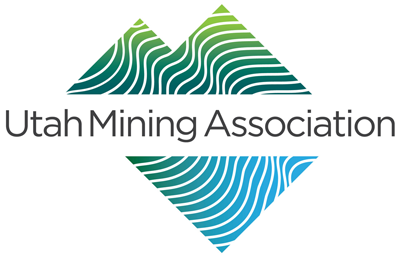By Thomas L. Lingard, Ray Quinney & Nebeker
During World War I, Lieutenant Ernest Tribe of the British Royal Engineers noticed that conventional pipe joints tended to fail at critical times, putting his soldiers in danger. To solve these problems, he devised the grooved pipe coupling. When he returned home in 1919, he filed, in the United States, Great Britain, Canada, and other countries, a patent for a “Pipe Joint,” or an early version of the Victaulic coupling, which is the foundation upon which Victaulic was founded. Over the last 100 years, Victaulic has continued to innovate. Indeed, the United States Patent and Trademark Office has issued over 300 patents to Victaulic and its successor companies. Today, many industries around the word use both Victaulic’s initial and new coupling designs, including underground mines, surface mines, shaft sinking operations, heavy civil construction, fire suppressant systems, skyscrapers, schools, and many others.
Based at least in part on its patent strategy, Victaulic is a recognized leader in the pipe connection industry. Understanding patents is critical to understanding the success of innovative companies like Victaulic. Business owners, especially in technologically-intensive fields, should understand what can be patented what should be patented.
What can be patented?
A patent provides the owner with the legal right to exclude others from selling the invention in the nation filed. Poor patent coverage can result in a competitor encroaching on the intended market of the patent. However, before filing a patent, an inventor should know what inventions qualify for patent protection.
The United States Patent Act states that a patent may be granted for “any new and useful process, machine, manufacture, or composition of matter.” 35 U.S.C. § 101. This description includes any tangible product, methods to make a product or perform a function, some computer algorithms, and other inventions. A patent application is examined and enforced based on descriptive claims, which describe the metes and bounds of the invention, similar to a mining claim that prevents others from mining inside the staked area. However, much like a bad survey can lead to a mining claim that misses a large portion of an ore deposit, patent claims should be carefully drafted to ensure that the patent covers the entirety of the invention. During patent examination, the claims must describe the invention in a way that it is both novel and non-obvious.
A novel invention has never been disclosed in its exact form before. For example, a patent filed for a “Pipe Coupling” that only includes the features of Victaulic’s “Pipe Joint” is not novel based on the “Pipe Joint” patent. Furthermore, any obvious variations on an invention are not patentable. Obvious variations often include combining two known elements into a single product, substituting one known part for another, and finding optimum operating parameters.
What should be patented?
Individuals and business owners file patents for many different reasons. Some file patents with an eye toward enforcement through litigation. Others file patents to show investors how innovative their company is. And some simply file patents for the satisfaction and recognition that they were the first to think of an idea. In the end, filing a patent is a business decision, based on the goals, needs, and market of the business. A clear patent strategy will help companies to decide which discoveries they should protect. Two patent strategies are revenue- and investment-focused patent strategies.
A revenue-focused patent strategy directs a company to file patents based on the anticipated revenues of the invention relative to the cost of filing a patent. Patent revenues may come from direct sales of a product associated with the invention. However, other patent revenue paths exist. For example, licensing a patent to a third party will generate revenue through royalties. A revenue-focused patent strategy is typically effective for inventions in emerging markets, where the inventor can sell the invention himself, or where the inventor can license the invention to a third party.
In other examples, as soon as a patent is granted, the owner may sue a competitor that is making, using, selling, or importing the patented invention and receive damages for patent infringement. However, patent infringement litigation is often expensive, with costs regularly reaching hundreds of thousands, or even millions, of dollars. Therefore, a revenue-focused patent strategy is also effective for inventions that have a high market value which can offset the high costs of litigation.
An investment-focused patent strategy directs a company to file patents based on the perceived value by investors. For example, startup companies looking for venture funding may advertise to investors the number of patents, both granted and pending, held by the company. Granted patents indicate to investors that the company has a product that is unique and that competition can be limited. Pending patents indicate to investors that the company is serious, willing to invest in its future, and that the company has a good-faith indication that some portion of the product is novel. Therefore, an investment-focused patent strategy is effective for startups looking to distinguish themselves to receive venture funding.
Additionally, inventions are not new forever. A patent expires 20 years from its filing date. After the patent expires, any person or company may make and sell the invention described in the patent. But, knowing that patents expire, during the patent term, many companies continue to improve upon existing products and develop new technologies. By continued development, an innovative company may continue to establish itself in the market, which can result in the company becoming a leader in the industry for years after the initial patent expires. Established companies may indicate to investors patent filing metrics, including the number of patents owned, filed, and granted during a quarter or year. Patent filing metrics provide investors a measure of the innovativeness of the company. More innovative companies are often viewed as more profitable, which attracts investors. Thus, an investment-focused patent strategy is effective for quickly evolving industries, where innovation is a key driver of success.
Business owners should have an understanding of what can be patented, and have a clear patent strategy to achieve their business’ needs and goals. Filing a patent can be the first step in the journey from turning an idea into a multi-national corporation.
Mr. Lingard, a registered patent attorney at Ray Quinney & Nebeker, specializes in preparing and prosecuting domestic and foreign patent applications in a variety of technological areas, including heavy material handling equipment, drill bits, metallurgical engineering, materials science, additive manufacturing, rotary steerable systems, downhole power generation and distribution, medical devices, and exercise equipment. Mr. Lingard has experience in identifying products that potentially infringe his client’s patents, as well as preparing patentability and patent infringement opinions. Prior to becoming an attorney, Mr. Lingard worked at several mines across the United States and Canada in underground tunneling, shaft sinking, and heavy civil construction.












